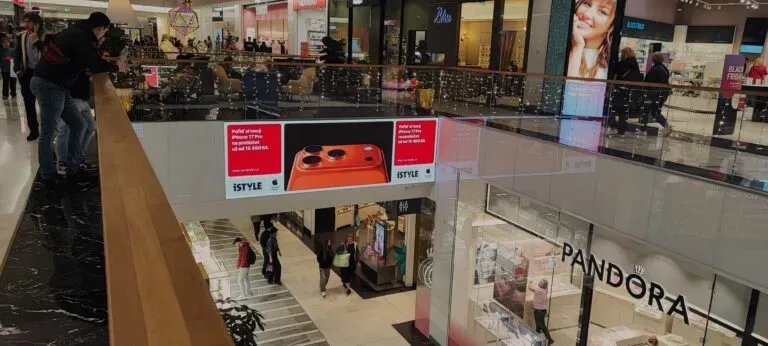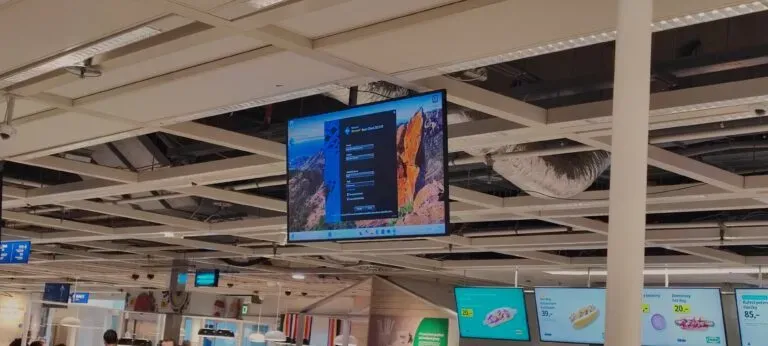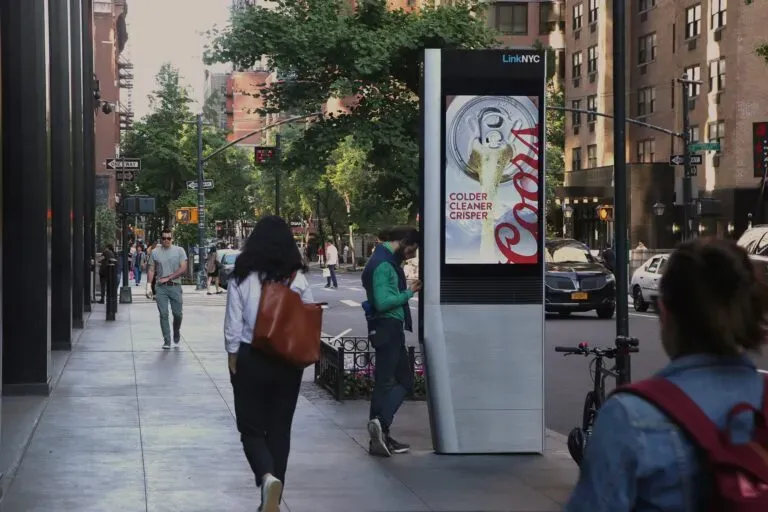Digital menu and CMS: 5 advantages of remote content management
Digital menu software: in the conditions of rapid technological development and digital communication, control over content on modern screens becomes a key element of successful interaction between brands and clients.
The spread of digital signage in retail, business centers, food establishments, and transport hubs requires a new approach to the creation, updating, and distribution of information. Companies strive to attract attention with bright visual messages, dynamic videos, and relevant content, but without an effective management system, this turns into a complex and resource-intensive process.
That is why modern Digital Signage platforms and screen software play a key role in increasing communication efficiency. They allow rapid data updates, automate displays, and manage content on any number of displays — from small screens to large video walls in stores. Below, we will consider how to ensure maximum simplicity and convenience in content administration.
Key factors of a convenient content management system
A content management system — or CMS for digital signage — must remain accessible and understandable to every employee, regardless of their level of technical training. To make the process as efficient as possible, it is important to consider the following factors:
Intuitive interface
The interface should be logical and visually clear, so that users without lengthy training can create schedules, upload media, manage playlists, and control remote screens. Such solutions are offered by modern Digital Signage platforms, simplifying the daily work of operators and marketers.
Fast work with files and content
Uploading, replacing, or deleting content should take a minimum of time. This is especially important for digital signage in retail, where information changes often — promotions, new arrivals, seasonal offers. High-quality screen software allows these actions to be performed in seconds.
Centralized management
All screens must be controlled from a single administrative panel. This allows controlling dozens or even hundreds of devices simultaneously — regardless of geographic location. Centralization is especially useful for network businesses where a unified content display policy is needed.
Automated scheduling
Modern CMS offer the ability to create complex display schedules: set days, weeks, time intervals, and content change scenarios. Thanks to this, employees can configure displays once, and then the system operates automatically.
High performance and stability
Fast request processing, minimal delays, and correct operation even with a large number of remote screens are the foundation of a quality digital network. Significant importance belongs not only to the CMS, but also to the reliability of equipment, such as Android media players for screens or compact Android set-top boxes, which are often used as a universal solution for Digital Signage.
Comfort of management as the foundation of efficiency
Comfortable content management is an important condition for the stable operation of the entire screen network. When the system works predictably and quickly, a company can promptly update messages, launch new campaigns, and maintain the relevance of information without additional time costs.
A quality combination of software and reliable media players ensures uninterrupted broadcasting and minimizes the risk of technical failures.
In such conditions, marketing specialists can focus on content and strategy, not on technical nuances. This increases team productivity, improves the quality of visual communications, and helps form a unified brand style on all screens.
5 advantages of remote content management via CMS
Competently configured content management combined with modern digital signage software and an effective screen content management system gives business a number of important advantages.
1. Significant reduction of time costs
Modern tools and cloud Digital Signage systems make it possible to quickly prepare and update content, automate routine processes, and reduce the workload on staff. Operators spend less time on technical tasks and more — on creating quality visual materials. This allows teams to work faster and more in sync, avoiding delays in publishing important messages.
2. Maximum use of screen capabilities
Using smart solutions for digital signage allows you to quickly change messages depending on real-time situations: promotional offers, assortment updates, urgent announcements, or other relevant content. This helps the business remain flexible and respond to changes instantly. Thanks to this, every screen brings maximum benefit and constantly works to strengthen the marketing strategy.
3. Increased accuracy and controllability of information
Due to centralized management, all screens work as a single system: content is synchronized, updated in a timely manner, and presented in the correct format. This significantly improves the quality of communication with the audience and increases trust in the brand. Standardized settings also help to maintain clear and recognizable content styling in any location.
4. Financial efficiency and reduction of operational costs
Process automation allows reducing the number of employees responsible for the operation of screens. Cost optimization is especially noticeable in large networks where a significant number of devices are used, particularly a modern digital signage player that provides stable and uninterrupted content playback. As a result, a company can reallocate the budget to infrastructure development or marketing activities.
5. Flexible scaling for large business
Large companies owning hundreds or thousands of screens receive a particular advantage due to a single cloud control center. The cloud-based Digital Signage system allows controlling networks of any scale, promptly updating content, and maintaining a consistent standard of visual communication across all locations. This simplifies network expansion and ensures predictable, stable operation at all levels.
In 2025, the software market continues to grow actively. According to Grand View Research, the global market for digital platforms for screen content management is estimated at about 31 billion US dollars, with a stable average annual growth rate of about 6–7 %. The main growth factors are the increasing demand for remote display management, content automation, and integration with cloud services.
Modern systems allow centralized content management on hundreds and thousands of screens, reducing administration costs and quickly adapting marketing campaigns. In addition, they support working with various types of Digital Signage players, mobile applications, and analytics tools for assessing content effectiveness.
As MarketsandMarkets notes, cloud solutions are becoming the standard for large networks, as they provide scalability and reliable operation.
By 2025, companies are increasingly favoring platforms with a simple interface, integration with various channels, and the capability for automated content scheduling. This makes it possible to enhance the efficiency of communications and optimize the management of screen networks.
Simplicity of administration demonstrated by best practices
One of the most convincing ways to demonstrate the convenience of modern management for Digital Signage is real cases of companies that have already optimized their work due to innovative tools. The effectiveness of such solutions is seen in the speed of content updates, automation of processes, and the ability to remotely control the screen network.
Modern Digital Signage software allows you to scale the system effortlessly, ensure stable display of materials, and adapt content to specific environmental conditions.
For many businesses, the ability to use a reliable Digital Signage player that ensures stable operation and supports various media formats is of great importance. Such devices form the foundation of quality and uninterrupted content playback, which is critically important for restaurants, shopping centers, hotels, cafes, and other venues where rapid information change plays a key role.
Successful examples prove: the right choice of technical base can significantly improve the effectiveness of visual communication.
Example 1: Content automation in a restaurant
One of the restaurants in Kyiv implemented a simple and flexible CMS for managing its outdoor screens. The interface allowed for automatic changes of promotional videos depending on the time of day, lighting level, and even weather conditions.
This ensured more relevant interaction with visitors, and the staff gained the ability to minimize manual actions. Additionally, the system reduced technical support expenses, since most updates occurred without the participation of IT specialists.
Example 2: Centralized system in an international shopping center
A large international shopping center introduced a system of automatic content replacement on information screens located in lobbies. Thanks to this solution, the speed of response to external events noticeably increased: managers could quickly activate new announcements, warnings, or marketing messages.
At the same time, the centralization of administrative processes decreased dependence on local staff and reduced administrative costs. The use of modern Digital Signage software also helped optimize resources and ensure uniform quality of display across all zones of the complex.
Example 3: Mobile management in a network of coffee shops
A small but dynamic network of cafes decided to move to a mobile platform for remote display management. This allowed administrators to instantly change the prices of food and drinks and make other changes to the digital menu for cafes, add promotions, or update the visual style depending on the time of day.
Moreover, using the mobile environment made it possible to completely abandon the reliance on stationary computers. With a simple integrated Digital Signage player, the system operated stably, and content was delivered to screens without delays.
What these practices demonstrate
These examples show how important it is to choose convenient, flexible, and intelligent management for Digital Signage, which simplifies team operations and increases business process efficiency. When content updates take just a few clicks, a company gains more opportunities for creativity, responds faster to changes, and shapes a professional level of communication with its audience. As a result, the business not only saves time and resources, but also creates a higher quality visual experience for its clients.
Advision is a content management system for remote control, media planning of video and audio content broadcasting, and a supply-side platform for monetising advertising time. We also implement a Wi-Fi tracking system to measure quantitative indicators of the advertising audience.
We help Digital Signage owners and DOOH advertising operators earn money from advertising, automate work processes, and build a reliable media infrastructure using AdTech and MarTech software solutions.
Contact us if you want to increase your profits and implement the latest technologies to solve your problems!
Share the news




















